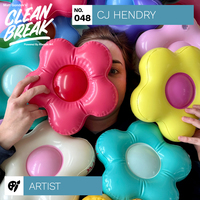Stretch
Yourself
- by Always Art Staff


Painter Francis Bacon said, “The job of the artist is always to deepen the mystery.” This can be interpreted in many ways; perhaps it is about creating work for the viewer that causes them to ask questions, expand their sense of wonder, or be curious. But it can also be about the artist, and the importance of developing a practice where you engage with questions, seek to grow, expand, learn, and uncover new ideas and methods for creation.
Developing a long-lasting art practice and career requires artists to commit to learning, transforming, and growing. Staying stagnant or getting overly complacent will result in your work getting repetitive or your practice getting dull to the point where you stop making art.
Artists should always be looking for ways to stretch themselves beyond their comfort zones and current limits. Here are five practices and habits you can establish to ensure that you avoid stagnation and dullness.

1. Explore new mediums
This doesn’t mean that if you are a photographer, you need to become a painter, but it will only benefit your work to play around with other forms of expression. If you are a painter, buy some clay and work with your hands on a 3D piece. It doesn’t have to turn into a perfect outcome that you sell or exhibit, but the process of doing something new can inspire you to take your current work in a new direction or help you get over a hurdle if you are feeling creative block. Look for inspiration online, see what tricks and experiments other artists use in their work, and consider how this could help you. See what looks exciting and fun and follow your instinct without worrying too much about outcomes and results.
2. Expand your subject matter
Break away from the type of work you have spent most of your time doing to get your mind working in new ways. If you are an abstract painter, try drawing a self-portrait. If you are a portrait photographer, take a day trip to a beautiful spot and take some landscape photos to get your mind working in new ways. Stepping out of routine will help you gain inspiration, and making a regular practice of leaving your comfort zone will ensure your art practice is always evolving throughout your life, keeping both yourself and your audience excited.

3. Be consistent
Make experimentation a habit. It shouldn’t be something you try only every few months or years when you hit a wall. Start every morning with playful sketching, have an afternoon break where you go for a walk and take pictures of inspiring objects, or put it in your calendar to do something out of the ordinary each week. Be disciplined with your experimentation to ensure you always stretch yourself beyond your comfort zone.
4. Reflection
Learn about yourself and what inspires you. Keep a journal so that you can reflect on experiences or events that brought you inspiration, or develop a folder of photos that get your mind flowing. Think about the habits you have and the practice you are pursuing, and understand your purpose and meaning while acknowledging where you feel you need to improve and grow. Staying true to yourself and confronting the reality of your work and practice will help you improve upon your weaknesses to become a better artist, overcoming what currently holds you back.

5. Seek feedback
Ask for outside opinions about your work. Getting feedback from other artists, professionals, or even other individuals in your life, like friends or family, will help you get out of your head and avoid tunnel vision. Sometimes we feel that the message of our work is obvious or that the outcome has the exact result we were aiming for. But then, when we hear from a viewer, we may learn they have an entirely different take. While you can’t control people’s interpretations, and a variety of opinions is desirable, hearing new perspectives can inspire you to take your work in new directions or to focus on elements that you had been ignoring.

